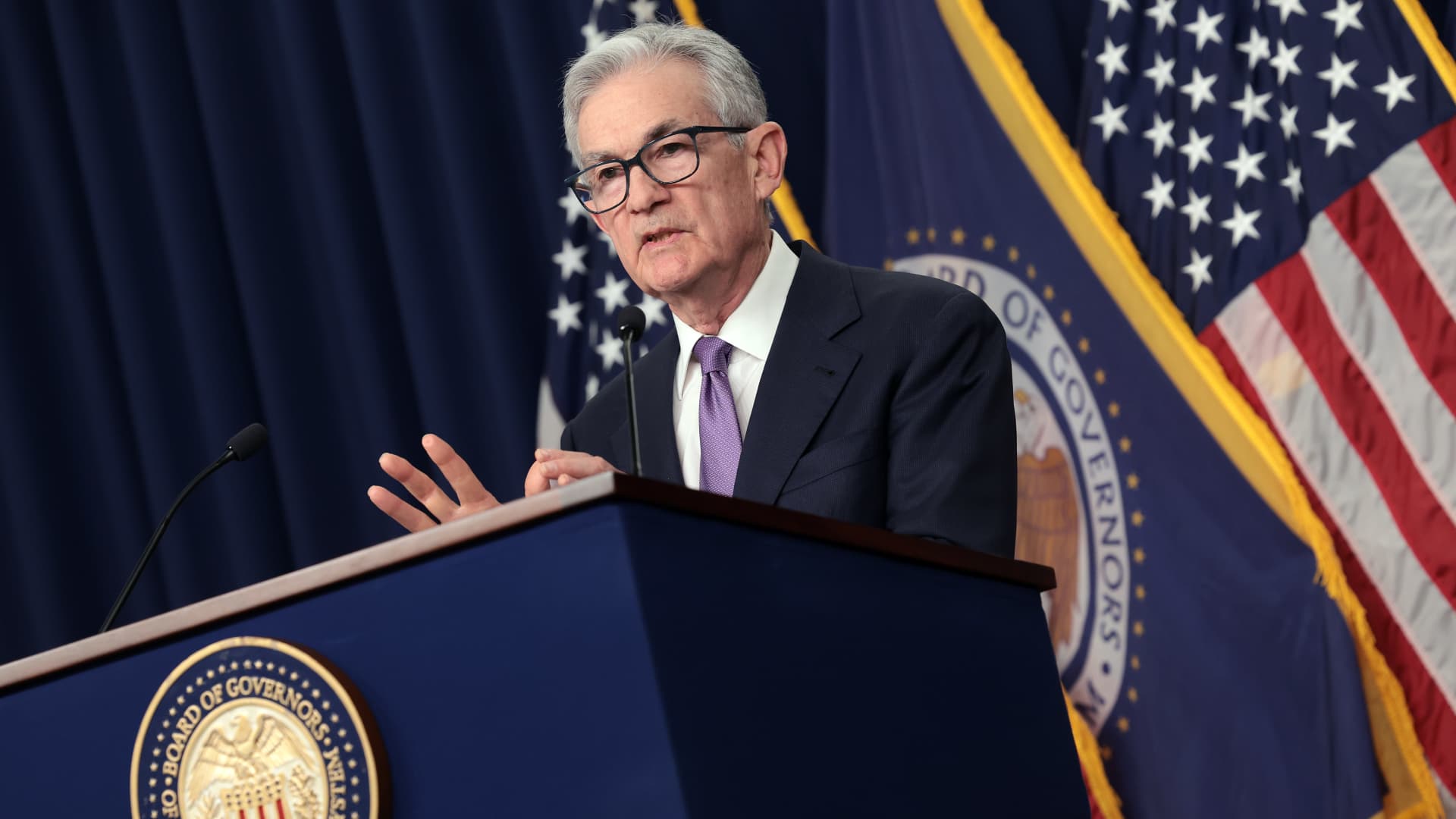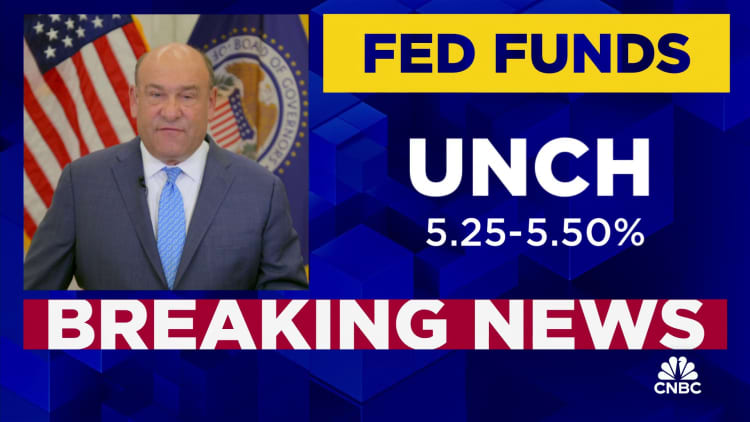

The Federal Reserve on Wednesday held interest rates steady as expected and signaled it still plans multiple cuts before the end of the year.
Following its two-day policy meeting, the central bank’s rate-setting Federal Open Market Committee said it will keep its benchmark overnight borrowing rate in a range between 5.25%-5.5%, where it has held since July 2023.
Along with the decision, Fed officials penciled in three quarter-percentage point cuts by the end of 2024, which would be the first reductions since the early days of the Covid pandemic in March 2020.
The current federal funds rate level is the highest in more than 23 years. The rate sets what banks charge each other for overnight lending but feeds through to many forms of consumer debt.
The outlook for three cuts came from the Fed’s “dot plot,” a closely watched matrix of anonymous projections from the 19 officials who comprise the FOMC. The chart provides no indication for the timing of the moves.
The plot indicated three cuts in 2025 – one fewer than the last time the grid was updated in December. The committee sees three more reductions in 2026 and then two more in the future until the fed funds rate settles in around 2.6%, near what policymakers estimate to be the “neutral rate” that is neither stimulative nor restrictive.
The grid is part of the Fed’s Summary of Economic Projections, which also provides estimates for gross domestic product, inflation and unemployment. The dot assortment skewed somewhat hawkish from December in terms of deviations from the median, but not enough to change this year’s projections.
Officials sharply accelerated their projections for GDP growth this year and now see the economy running at a 2.1% annualized rate, up from the 1.4% estimate in December. The unemployment rate forecast moved slightly lower from the previous estimate to 4%, while the projection for core inflation as measured by personal consumption expenditures rose to 2.6%, up 0.2 percentage point from before but slightly below the most recent level of 2.8%. The unemployment rate for February was 3.9%.
The outlook for GDP also rose incrementally for the next two years. Core PCE inflation is expected to get back to target by 2026, same as in December.
The FOMC’s post-meeting statement was almost identical to the one delivered at its last meeting January save for an upgrade on its job growth assessment to “strong” from the January characterization that gains had “moderated.” The decision to stand pat on rates was approved unanimously.
Markets had been watching closely for clues about where the Fed would go from here with monetary policy.
Earlier this year, traders in the fed funds futures market had strongly priced in a likelihood that the central bank would start cutting at this week’s meeting and continue doing so until it had totaled as many as seven decreases by the end of the year. However, recent developments have changed that outlook dramatically.
Higher than expected inflation data to start 2024 triggered caution from top Fed officials, and the January FOMC meeting concluded with the central bank saying it needed more evidence that prices were decelerating before it would gain “greater confidence” on inflation and start cutting.
Statements from Chair Jerome Powell and other policymakers since then added to the sentiment of a patient, data-driven approach, and markets have had to reprice. Powell and his cohorts have indicated that with the economy still growing at a healthy pace and unemployment below 4%, they can take a more measured approach when loosening monetary policy.
The expectation heading into this week’s meeting is for the first cut to happen in June and two more to follow, bringing markets and Fed officials back into alignment.
Beyond that, markets also were looking for some direction on the Fed’s balance sheet reduction program.
In a process that began in June 2022, the central bank is allowing up to $60 billion a month in maturing proceeds from Treasurys plus up to $35 billion in mortgage-backed securities to roll off each month rather than be reinvested. The process is often referred to as “quantitative tightening” and has resulted in about a $1.4 trillion drawdown in the Fed’s holdings.
However, there was no immediate information provided about changes in QT, though Powell has indicated several times that the matter was to be discussed at this meeting. More insight could be forthcoming from Powell’s post-meeting news conference and the release of meeting minutes in three weeks.







